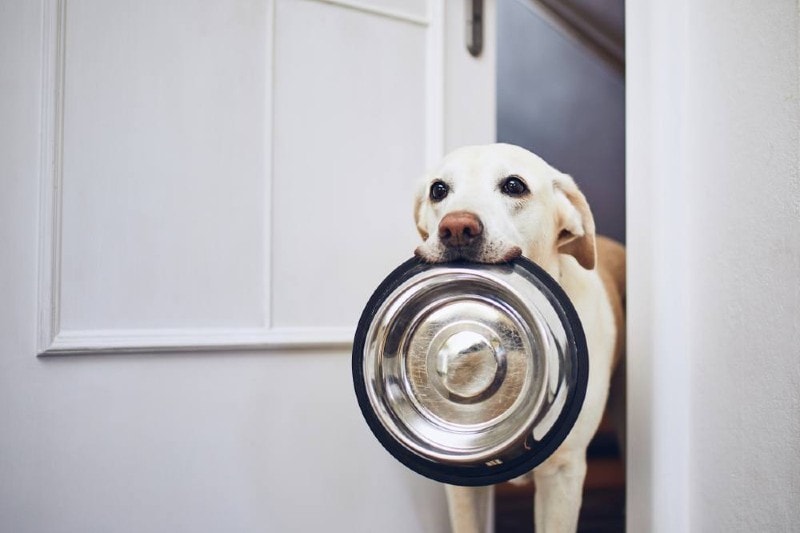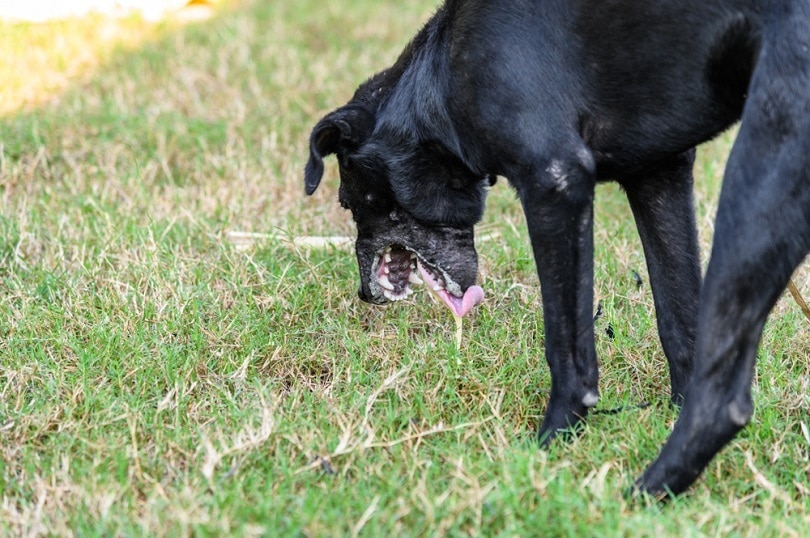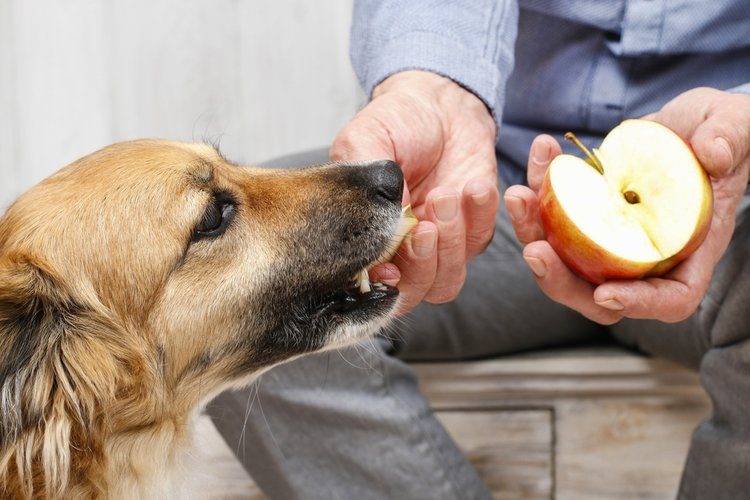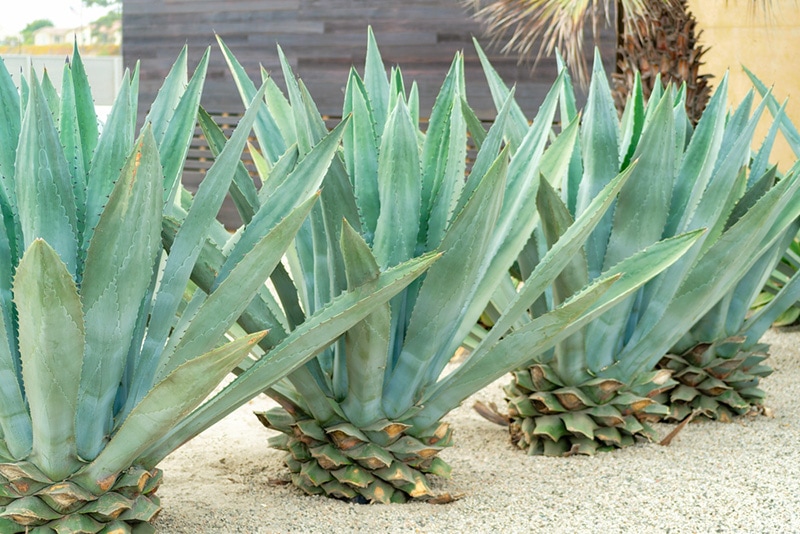Nopals are large cacti with pads (leaves) that are edible when the plant is young. You might know nopales by their nickname, the prickly pear cactus, and if you live in states like Arizona, New Mexico, and Nevada, you’ve likely tried them at your favorite Mexican restaurant. In moderation, your dog can eat nopales safely. You should note, however, that it’s highly recommended to cook the nopales first. This removes oxalic acid, which is a chemical that can give your pup an upset stomach.

Do Nopales Offer any Nutritional Benefits for Your Dog?
In moderation, nopales offer several nutritional benefits that make them a decent snack for your dog. First, they’re high in fiber, which can help your dog’s digestion. Nopales also have a high amount of vitamins A, C, and E, plus a small amount of magnesium, calcium, and potassium.

Do Nopales Contain Anything Harmful to Dogs?
Nopales contain one natural substance called saponin, which is known to cause stomach upset in dogs in large doses. That said, your dog would need to eat a large number of nopales for actual physical harm to occur. If you’re giving your pup a strip or two of nopal pads every once in a while, it’s completely safe.
While nopales have a lot of healthy fiber, too much fiber can be problematic for your dog, gumming up its GI tract and making it difficult for your pup to defecate. Also, nopales are a diuretic, and diuretics will make your dog urinate more frequently. Giving them some extra water when they eat a nopal pad snack is recommended, so they don’t get a dry mouth. For both of these reasons, feeding your dog nopales every day is not recommended.
Can Your Dog Eat Raw Nopales?
Raw nopales aren’t recommended for your dog for several reasons. First, they have sharp spines that can hurt your dog’s delicate lips, tongue, and mouth, not to mention their nose. Also, raw nopales contain oxalic acid, which in high amounts can cause a dog to suffer tremors, kidney failure, and, in severe cases, death. Furthermore, raw nopales aren’t palatable to dogs. So, while eating a chunk of raw, de-spined nopal pad won’t harm your dog, it’s best if they don’t eat any.

How to Cook Nopales to make them Safe for your Dog
It’s rather simple to cook nopales, and you don’t need to remove the spines. You can slice the nopales into half-inch wide strips with the spines still attached. Once sliced, add the strips to a pot of water and ensure that you have enough to cover them completely. Then, bring the water to a boil and let the nopal pad strips cook until they’re soft, which takes about 10 minutes. Once cooked, let the nopal pad strips cool off, and you can give them directly to your dog. As for any spines, don’t worry; they’re soft and will bend when chewed.
What Can Happen if a Dog Eats Too Many Nopales?
The fiber content of nopales is so high that it can also cause stomach and digestion problems for your dog. That’s why feeding your dog cooked nopales in small amounts is best. If your dog were to eat raw nopales, which would be rather unusual but not unheard of, the symptoms they might experience include:
- Diarrhea
- Vomiting
- Problems and pain going defecating
- Nausea and dizziness
As soon as you see your dog show any of these signs after ingestion, you should call your vet.
One last thing you should note is that feeding your dog cooked nopales over many years and in large amounts can cause them to suffer from painful kidney and bladder stones. That’s because of the oxalic acid, which can lead to formation of bladder stones.

Do All Vets Recommend Feeding your Dog Nopales?
Not all veterinarians recommend feeding a dog nopales. The truth is, nopales are not high on the list of great dog snacks for the reasons we’ve already discussed. Some veterinarians point to the downsides of feeding a dog nopal pads and have decided that it’s best not to give them to your dog. They seem to have a point since nopales come with health risks.
What Alternatives Are There to Feeding Your Dog Nopales as a Snack?
Several high-quality options are available if you’d like to give your dog a healthy snack filled with vitamins, minerals, antioxidants, and more. Pumpkin is a good one as it contains the same good fiber and beta carotenes to help your dog’s vision. Apples are a fantastic snack for your dog as long as you remove the seeds, and bananas are great too. Both fruits have lots of natural fructose sugar for energy, vitamins, and minerals. Plus, apples and bananas have fiber your dog can more easily digest.

Which Cacti Are Poisonous for Dogs?
While the prickly pear cactus is edible when cooked and, in moderation, won’t hurt your dog, some cacti are toxic and can hurt your dog. Below are three succulent plants common in American households that are toxic to your pup.
Aloe Vera
Aloe vera is an incredibly popular house plant in many American homes. It has medicinal and therapeutic advantages and is excellent to use on sunburns. However, even though humans can eat it, aloe vera can cause severe gastrointestinal distress in your dog and diarrhea, vomiting, and lethargy.
Jade
Your dog should never be allowed to eat a jade plant’s leaves because, like many other cacti, they can cause severe gastrointestinal distress in large amounts.
Kalanchoes
As beautiful as they are, if your dog eats kalanchoes, they can suffer from gastrointestinal distress and arrhythmia.
Can Prickly Pear Cactus Eye or Skin Problems for your Dog?
Everything up to this point has been about feeding or not feeding nopales as a snack to your dog. However, if a dog were to brush up against a prickly pear cactus, the thorns could cause them some distress. That’s especially true for the skin around their muzzle, eyes, nose, and even ears. If this has happened to your dog, you might notice swelling around their eyes that, in severe cases, can cause temporary or even permanent blindness. This reaction would only be caused if your dog stuck their full face into a giant prickly pear cactus. In other words, it would be highly unusual.

What’s the 90/10 Rule for Dog Snacks?
The 90/10 rule is an informal rule veterinarians use when advising pet parents about giving snacks to their dogs. It states that, on any given day, 90% of what your dog eats should be their regular diet, while 10% can consist of treats.
In real-world terms, only a very small amount of what you feed your dog every day should be snacks. Anything more than that, and you risk the same health problems as a human would from over-snacking, including weight gain, high blood pressure, and lethargy.
Final Thoughts
If they’re cooked, nopales can be a safe snack, according to many veterinarians and dog nutrition experts. Some experts say that you should avoid nopales and give your dog other snacks instead because of the risks they pose. Ultimately, it will be your call, so you might want to talk with your vet and get their opinion first.
Related Reads:
Contents
- Do Nopales Offer any Nutritional Benefits for Your Dog?
- Do Nopales Contain Anything Harmful to Dogs?
- Can Your Dog Eat Raw Nopales?
- How to Cook Nopales to make them Safe for your Dog
- What Can Happen if a Dog Eats Too Many Nopales?
- Do All Vets Recommend Feeding your Dog Nopales?
- What Alternatives Are There to Feeding Your Dog Nopales as a Snack?
- Which Cacti Are Poisonous for Dogs?
- Can Prickly Pear Cactus Eye or Skin Problems for your Dog?
- What’s the 90/10 Rule for Dog Snacks?
- Final Thoughts











